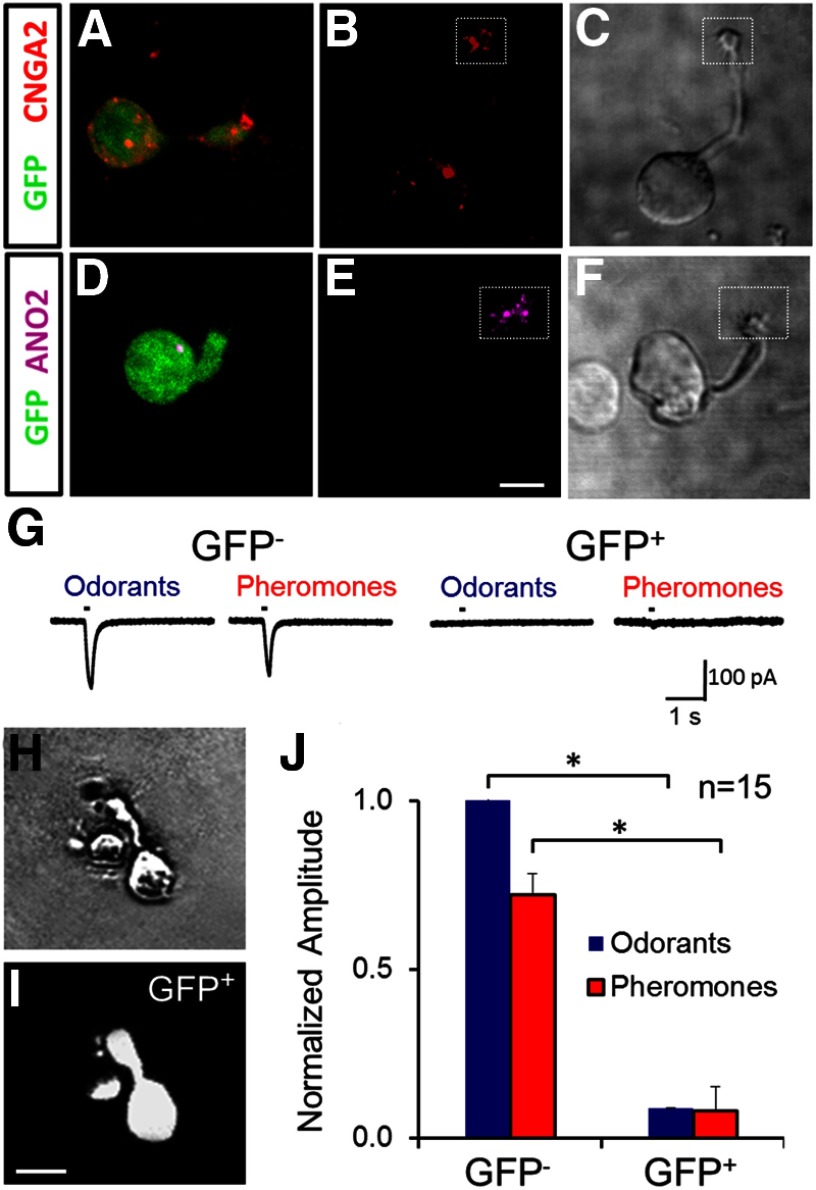Figure 7.
TRPM5 knockout substantially diminishes loose-patch responses of chemosensory neurons expressing GFP in TRPM5 GFP mice. A–F, Single-label immunohistochemistry obtained with the antibodies for CNGA2 (red) and ANO2 (purple) in OSNs isolated from TRPM5-GFP/knock-out mice. TRPM5-KO-GFP+ OSNs express CNGA2 but not ANO2. A, D, Images of TRPM5-(GFP)-expressing OSNs (green) isolated from TRPM5-KO-GFP mouse immunoreacted with an antibody against CNGA2 (A, red) or ANO2 (D, purple). B, E, Images of OSNs that do not express TRPM5 (negative, green) immunoreacted with an antibody against CNGA2 (B, red) or ANO2 (E, purple). GFP-negative OSNs in B and E were searched for using light microscopy under DIC optics (C, F). Data shown for each experiment are representative of images of 10 OSNs. Data are representative of 10 TRPM5-GFP+ and 10 TRPM5-GFP− OSNs. Scale bars, 1 μm. G–J, Loose-patch responses of OSNs from TRPM5-KO mice to pheromones and odorants. G, Examples of loose-patch responses to pheromones in a GFP− OSN and a GFP+ OSN. H, I, Photograph of a TRPM5-KO-GFP+ OSN under phase contrast (H) and GFP fluorescence optics (I). J, Peaks of pheromone and odorant loose-patch responses in TRPM5-KO-GFP− and TRPM5-KO-GFP+ OSNs (Wilcoxon rank sum test, p < 0.0001; n = 15 for both TRPM5-KO-GFP+ and TRPM5-KO-GFP− OSNs). Error bars indicate SEM.

